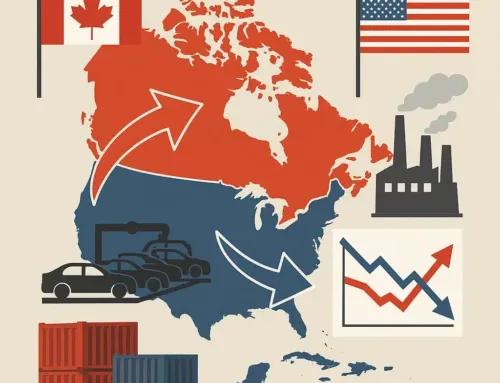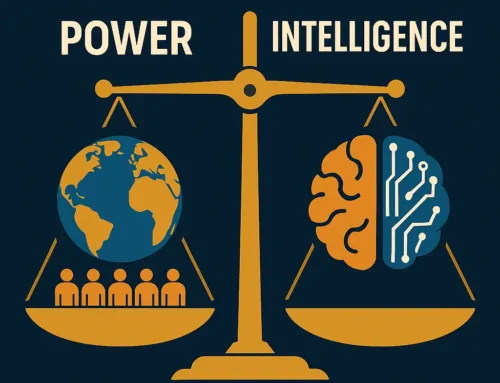
Approx. read time: 10.9 min.
Post: A World in Crisis: Middle East Conflict and Natural Disasters Shape Global Instability
Global Tensions Escalate Amid Middle East Conflict and Natural Disasters
As of October 2024, the world faces escalating conflicts and natural disasters. These events are reshaping global dynamics. Two major crises dominate headlines. The first is the ongoing war between Israel and Hamas, with hostilities spilling into Lebanon. The second is the anticipated arrival of Tropical Storm Milton in the U.S. Both crises highlight global instability and impact continents, economies, and political landscapes.
The Middle East Conflict: A Year of War and Tragedy
One Year Since the October 7 Hamas Attacks
October 7, 2024, marks one year since the horrific Hamas attacks that triggered Israel’s longest and deadliest war in decades. On that day in 2023, Hamas militants launched surprise assaults on Israeli territory. They killed over 1,200 civilians and took more than 200 hostages. It was the deadliest day for Israelis since the state’s founding in 1948. The attacks triggered a military response that has since engulfed Gaza, Lebanon, and other parts of the region.
In a speech marking the solemn anniversary, Israeli Prime Minister Benjamin Netanyahu vowed that Israel would “continue to fight” until it achieves its stated objectives: the total dismantling of Hamas, the rescue of hostages, and the prevention of future threats from Gaza. He emphasized that the war is not just about retaliation for past attacks but about ensuring the security and survival of the Israeli people.
Humanitarian Crisis in Gaza
The humanitarian toll in Gaza has been devastating. The United Nations reports that Israeli attacks have killed over 41,000 Palestinians in the past year, including a significant number of children. This staggering death toll has overwhelmed Gaza’s already struggling medical infrastructure. Hospitals are operating at capacity, many with severely limited resources, while aid workers face life-threatening conditions. Hundreds of UN staff members have also lost their lives during the conflict, marking the highest death toll for UN workers in a single conflict in the organization’s history.
Philippe Lazzarini, the head of the United Nations Relief and Works Agency (UNRWA), described the situation as “unspeakable suffering,” with nearly 2 million people trapped in Gaza facing daily bombardments, forced displacement, and a lack of basic necessities such as clean water and food. Aid groups have struggled to deliver assistance to the affected population due to Israel’s continued blockade of the enclave and the ongoing airstrikes.
Gaza’s northern regions, including the densely populated Jabalya refugee camp, have been hit especially hard. Despite calls for ceasefires and safe corridors for civilians, the Israeli military has continued its offensive in these areas, arguing that Hamas continues to regroup and launch attacks from within civilian centers. Recent airstrikes on Jabalya killed at least 10 people, with many others still missing under the rubble. The camp has become a symbol of the broader humanitarian crisis facing Gaza, where nearly 1.9 million people have been displaced from their homes in the past year.
Hezbollah’s Role in the Expanding Conflict
The conflict is no longer contained to Gaza. In Lebanon, the Iranian-backed Hezbollah militant group has become increasingly involved in the fighting. Hezbollah has fired hundreds of rockets at Israeli targets from across the Lebanese border, and Israel has responded with a series of airstrikes on Hezbollah positions in Beirut and southern Lebanon.
Escalation on October 7
On October 7, 2024, Hezbollah launched approximately 190 projectiles into Israel, targeting military and civilian areas alike. The Israeli military responded with airstrikes that lit up the skies over Beirut, targeting what it described as Hezbollah’s intelligence headquarters and other key infrastructure. The conflict is now spreading deeper into Lebanon, with residents of Beirut’s southern suburbs being ordered to evacuate ahead of anticipated Israeli strikes.
Humanitarian Crisis in Lebanon
The situation in Lebanon is becoming increasingly dire. Israel’s bombardment of Hezbollah targets has destroyed critical infrastructure, including hospitals and civilian shelters.The Lebanese health ministry reported that Israeli airstrikes on October 7 killed at least 22 people and wounded many more. The conflict has displaced thousands of Lebanese civilians. This adds to the large number of refugees who fled to the country from Syria and other conflict zones over the past decade.
Regional Implications and Iranian Involvement
The war’s impact on Lebanon raises concerns about a broader regional conflict. Hezbollah is a key ally of Iran, and its increasing involvement in the fighting raises the specter of direct Iranian intervention. Israeli officials have accused Iran of supplying Hamas with weapons, including missiles and drones, which have been used to target Israeli cities. Israeli military officials have indicated that they are weighing retaliatory strikes against Iran, further escalating tensions in a region already on edge.
U.S. and Global Response to the Conflict
The United States and other global powers have been deeply involved in efforts to contain the conflict, but with mixed results. President Joe Biden has called for a ceasefire and a negotiated solution to the war, emphasizing the need for humanitarian aid to reach Gaza’s beleaguered population. In a statement commemorating the anniversary of the October 7 attacks, Biden expressed his “deepest condolences” to the people of Israel and reaffirmed America’s commitment to their security.
However, Biden’s calls for restraint have not translated into immediate results. Israel has continued its military offensive, and there are growing concerns in Washington about the long-term implications of the war. CIA Director William Burns warned that the risk of an unintended escalation is very real, particularly if the conflict spreads to other countries in the region. Burns also noted that while neither Iran nor Israel appears eager for a full-scale war, the possibility of miscalculations leading to broader conflict remains high.
U.S. Secretary of Defense Lloyd Austin reiterated America’s unwavering commitment to Israel’s security during a call with Israeli Defense Minister Yoav Gallant, underscoring U.S. support for Israel’s right to defend itself. However, there is growing debate within the U.S. government about how to balance support for Israel with calls for restraint in a war that has already claimed tens of thousands of lives.
Tropical Storm Milton: A Growing Threat to Florida
While the Middle East is engulfed in conflict, the United States faces a natural disaster of its own. Tropical Storm Milton is approaching the Florida coastline, and residents are scrambling to prepare for its expected landfall. Pinellas County, located on Florida’s Gulf Coast, has been particularly active in its preparations. Local authorities have been distributing sandbags and urging residents to secure their homes and evacuate vulnerable areas.
Milton is expected to bring heavy rains, strong winds, and the possibility of widespread flooding. Florida Governor Ron DeSantis has declared a state of emergency for the region, and the Federal Emergency Management Agency (FEMA) has mobilized resources to assist with disaster response and recovery efforts. The storm is expected to impact major population centers, including Tampa and St. Petersburg, both of which are located in Milton’s projected path.
Residents of Pinellas County have been lining up to fill sandbags in an effort to protect their homes from flooding. Park Rangers have been directing traffic at sandbag distribution centers, and local officials have been urging people to take the storm seriously. Florida is no stranger to hurricanes, but the rapid intensification of Tropical Storm Milton has raised concerns about the state’s ability to respond to what could be one of the most severe storms of the season.
The Intersection of Global Crises
The simultaneous escalation of war in the Middle East and the impending natural disaster in the U.S. highlights global instability. Countries like Israel, Lebanon, and Gaza are dealing with the ravages of war. Meanwhile, the U.S. is facing the unpredictability of nature. These crises are testing the resilience of governments and international organizations. They raise questions about the world’s ability to handle overlapping emergencies.
The Middle East conflict is a stark reminder of how quickly regional disputes can escalate globally. The war has already disrupted oil markets, causing prices to fluctuate wildly. Fears are mounting that the conflict could spread to key oil-producing regions. Iran’s involvement, as a major player in global energy markets, adds complexity. Any Israeli strike on Iranian oil infrastructure could trigger price spikes and supply shortages worldwide.
At the same time, natural disasters like Tropical Storm Milton highlight the growing risks of climate change. Storms are becoming more frequent and intense, forcing countries to address their devastating impacts. In Florida, coastal communities are particularly vulnerable to rising sea levels and powerful storms. Tropical Storm Milton emphasizes the urgent need for stronger disaster preparedness measures.
A Global Call for Action
The crises in the Middle East and Florida require immediate, coordinated responses. In Gaza and Lebanon, the priority is de-escalating the conflict and delivering humanitarian aid. International organizations, including the United Nations, are calling for greater access to provide food, water, and medical supplies to Gaza’s besieged population. Negotiations for a ceasefire and hostage deal are ongoing, but progress is slow.
In Florida, responding to Tropical Storm Milton will need close cooperation between local, state, and federal authorities. FEMA and state emergency teams are preparing for the storm’s impact. The real challenge will come in the days and weeks after landfall. The focus must remain on saving lives, protecting property, and ensuring a swift recovery for those affected.
Both crises highlight the importance of global cooperation. Whether responding to war or natural disasters, the international community must act together. The Middle East conflict risks destabilizing the region, while storms like Milton show the global impact of climate change. Only through collective action can we reduce the damage and prevent future crises from escalating.
Here are a few biblical quotes that reflect themes of war, natural disasters, and global turmoil mentioned in the article:
1. War and Conflict
- Matthew 24:6-7 (NIV):
“You will hear of wars and rumors of wars, but see to it that you are not alarmed. Such things must happen, but the end is still to come. Nation will rise against nation, and kingdom against kingdom.”
This verse reflects the ongoing conflicts in the Middle East and the widespread wars and rumors of wars in today’s world. - James 4:1 (NIV):
“What causes fights and quarrels among you? Don’t they come from your desires that battle within you?”
This passage highlights the internal and external conflicts that often lead to wars and strife.
2. Natural Disasters
- Luke 21:25-26 (NIV):
“There will be signs in the sun, moon, and stars. On the earth, nations will be in anguish and perplexity at the roaring and tossing of the sea. People will faint from terror, apprehensive of what is coming on the world, for the heavenly bodies will be shaken.”
This scripture captures the fear and chaos that natural disasters, like storms, cause. It relates to the anticipated arrival of Tropical Storm Milton and the global impact of such events. - Isaiah 29:6 (NIV):
“The Lord Almighty will come with thunder and earthquake and great noise, with windstorm and tempest and flames of a devouring fire.”
This verse highlights the power of natural disasters like storms and earthquakes, reflecting modern environmental crises.
3. Global Turmoil and End Times
- Mark 13:8 (NIV):
“Nation will rise against nation, and kingdom against kingdom. There will be earthquakes in various places, and famines. These are the beginning of birth pains.”
This quote links war and natural disasters, suggesting they mark the start of greater troubles. - Revelation 6:4 (NIV):
“Then another horse came out, a fiery red one. Its rider received power to take peace from the earth and cause people to kill each other. To him was given a large sword.”
This passage from Revelation refers to the “red horse” of war, symbolizing ongoing conflict and bloodshed, relevant to the current warfare in the Middle East.
4. Human Suffering and Hope
- Psalm 46:1-2 (NIV):
“God is our refuge and strength, an ever-present help in trouble. Therefore we will not fear, though the earth give way and the mountains fall into the heart of the sea.”
In times of global turmoil, whether from war or natural disasters, this passage offers hope and reassurance to those in hardship. - Romans 8:22 (NIV):
“We know that the whole creation has been groaning as in the pains of childbirth right up to the present time.”This verse symbolizes the world’s struggles and reflects today’s global crises, showing they are part of the human experience.These verses explore themes of war, natural disasters, and suffering, offering a spiritual perspective on these events.
Related Videos:
Related Posts:
Navigating the Future: Addressing Canada’s Growing Challenges in Law Enforcement and Climate Change
Comprehensive Overview of Middle East Conflicts from 1948 to October 2023
Understanding the Israel-Gaza Conflict: Involvement of Iran, Lebanon, and Militant Groups
Israeli Military’s “No Comment” Response to Reports of Explosions in Iran
Explaining the World to My Son: The Invisible Dynamics of Wealth
IDF Exposes Hezbollah’s Fake Social Media Profiles Targeting Israeli Military Intelligence
Global Geopolitical Tensions and Economic Shifts in the Post-Pandemic World









